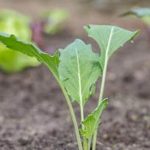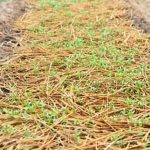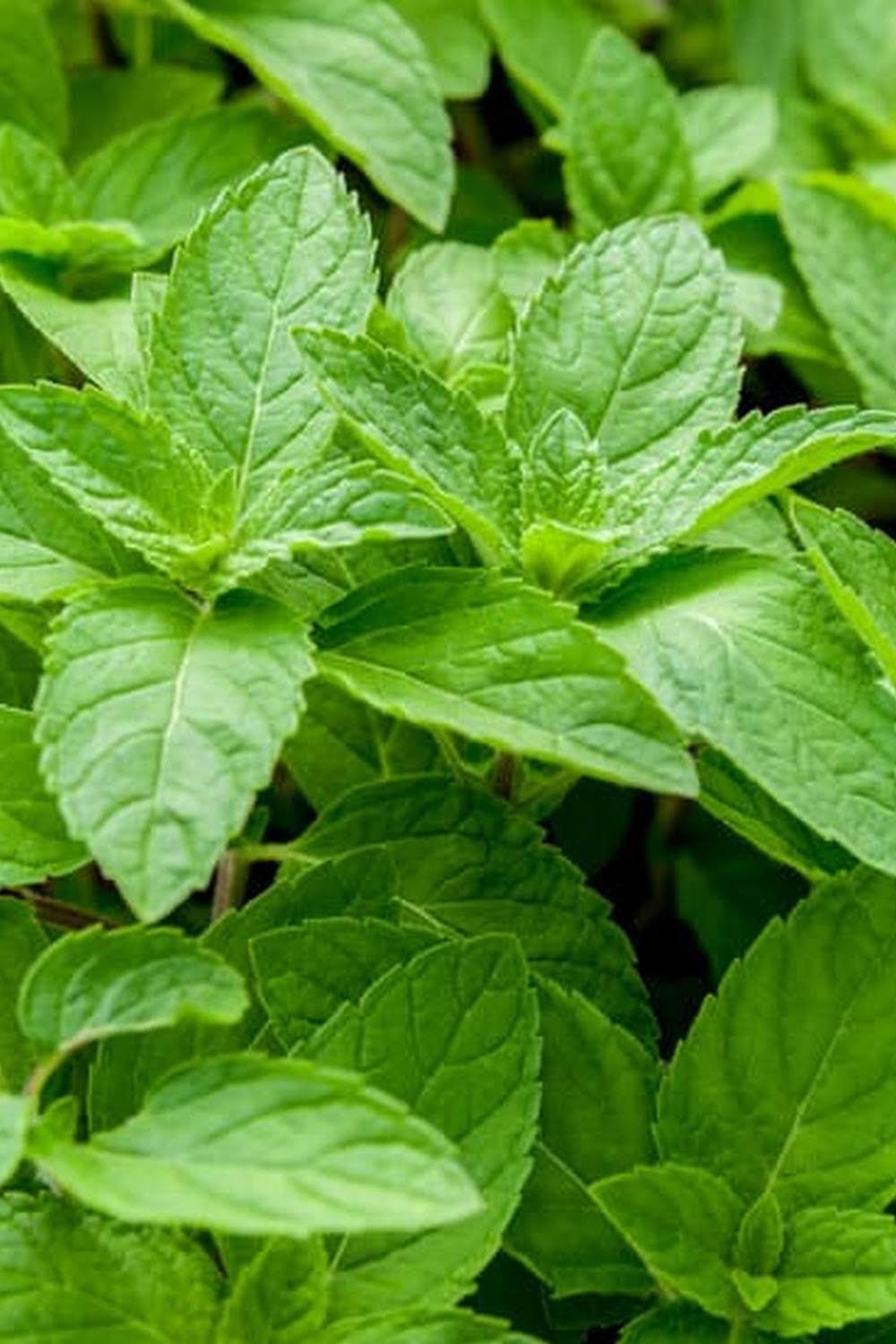In any vegetable garden, weed control is a crucial aspect of maintaining healthy and thriving plants. Weeds can compete with vegetables for sunlight, nutrients, and water, thereby hampering their growth and reducing yields. Thankfully, there are effective solutions available to combat these unwelcome intruders. One such solution is the use of weed control fabric.
Weed control fabric works as a physical barrier that prevents weeds from sprouting and growing in your vegetable garden. It acts as an aid to cultivation by suppressing weed growth while allowing air, water, and nutrients to reach the soil and plants below. With the right weed control fabric in place, you can significantly reduce the time and effort spent on manual weeding, allowing you to focus more on the enjoyable aspects of gardening.
However, finding the best weed control fabric for your vegetable garden can be a daunting task. With so many options available in the market, it’s important to understand the basics of how these fabrics work and what factors to consider when choosing one.
This article will guide you through the process of selecting the right weed control fabric for your vegetable garden by exploring key factors to consider, reviewing top picks from users and experts, providing installation tips, discussing maintenance techniques, comparing costs, discussing benefits for vegetable growth and health, and exploring alternative methods for weed control.
By arming yourself with knowledge about different types of weed control fabrics and their effectiveness in various settings, you will be able to make an informed decision that suits your specific needs. So let’s dive into this comprehensive guide on achieving a weed-free vegetable garden with the best weed control fabric available.
Understanding the Basics
Weed control fabric, also known as landscape fabric or weed barrier, is a material that is designed to inhibit the growth of weeds in vegetable gardens. It is made from woven or non-woven synthetic materials that are permeable to water and air, but prevent sunlight from reaching the soil. This prevents weed seeds from germinating and growing.
How does it work?
Weed control fabric works by creating a physical barrier between the soil and the sunlight. When properly installed, it effectively suppresses the growth of weeds by blocking their access to sunlight. Without sunlight, weeds cannot photosynthesize and produce energy, leading to their eventual death. Additionally, weed control fabric helps to conserve moisture in the soil by reducing evaporation, which is crucial for maintaining optimal growing conditions for vegetables.
The benefits of using weed control fabric
Using weed control fabric in your vegetable garden offers several benefits. Firstly, it significantly reduces the amount of time and effort needed for weeding. By preventing weeds from establishing themselves in your garden beds, you’ll spend less time pulling or hoeing them out. This means more time for other important gardening tasks.
Secondly, weed control fabric helps to conserve water. By reducing evaporation from the soil surface, it allows water to penetrate deeper into the soil and reach the plant roots more efficiently. This not only conserves water but also promotes healthier root development and stronger plants.
Lastly, weed control fabric provides a clean and tidy appearance to your vegetable garden. It creates a uniform surface that eliminates unsightly weeds poking through your plants, giving your garden a manicured look that will impress both you and your visitors.
Overall, understanding how weed control fabric works and appreciating its benefits can help vegetable gardeners make an informed decision about whether it is a suitable option for their specific needs and gardening practices.
Key Factors to Consider
Material and Durability
One of the key factors to consider when choosing the right weed control fabric for your vegetable garden is the material and durability of the fabric. Weed control fabrics are typically made from either woven or non-woven materials.
Woven fabrics are stronger and more durable, making them a good choice for areas with heavy foot traffic or where there may be a lot of movement in the garden. On the other hand, non-woven fabrics are more lightweight and flexible, allowing for better water and air flow to the soil.
Permeability
Another important factor to consider is the permeability of the weed control fabric. Permeability refers to the ability of water and nutrients to pass through the fabric and reach the plants’ roots. It’s crucial to choose a fabric that allows adequate water penetration while still preventing weeds from growing.
A highly impermeable fabric can lead to water pooling on top of it, potentially causing root rot or fungal diseases in your vegetables. Look for a balance between weed prevention and water permeability when selecting your weed control fabric.
UV Resistance
UV resistance is an essential factor to consider when choosing weed control fabric for your vegetable garden because constant exposure to sunlight can weaken or degrade certain types of fabrics over time. Fabrics with UV resistance will have a longer lifespan, ensuring that they remain effective at preventing weeds for an extended period. When selecting a weed control fabric, check if it has been treated or coated with UV protection.
By considering these key factors – material and durability, permeability, and UV resistance – you can make an informed decision on which weed control fabric is best suited for your vegetable garden. Assessing these factors will help ensure that you choose a fabric that not only effectively prevents weeds but also supports healthy plant growth by allowing adequate moisture and nutrients to reach your vegetables.
The Top Picks
When it comes to choosing the best weed control fabric for your vegetable garden, there are several options available in the market. Here are some top picks that have received positive reviews from gardeners:
Heavy-Duty Woven Weed Control Fabric
This type of fabric is made from woven polypropylene and is known for its durability and strength. It effectively prevents weeds from growing through and allows water to penetrate easily. Heavy-duty woven weed control fabric is perfect for long-term use and is suitable for larger areas or raised beds.
Landscape Fabric with Planting Holes
This type of weed control fabric has pre-cut planting holes, making it convenient for vegetable gardens. It allows you to easily create designated spaces for each plant, while still providing excellent weed suppression. Landscape fabric with planting holes is ideal for smaller gardens where precise spacing is required.
Mulch Mats
Mulch mats are an alternative option to traditional weed control fabric. These pre-cut mats made of biodegradable materials, such as natural fibers or recycled paper, can be placed around plants to suppress weeds and retain moisture in the soil. Mulch mats are particularly beneficial for vegetable gardens as they also help regulate soil temperature.
It’s important to consider factors like the size of your garden, ease of installation, and desired longevity when choosing the right weed control fabric. Additionally, always check if the fabric you choose is specifically designed for vegetable gardens as some may be more suitable for ornamental beds or larger-scale landscapes.
Before making a purchase, it’s advisable to read customer reviews and ratings online from fellow gardeners who have used these fabrics in their vegetable gardens. Their experiences can provide valuable insights into the effectiveness and durability of different products.
Remember that no matter which weed control fabric you choose, proper installation and maintenance are crucial for its long-lasting effectiveness. Make sure to follow the manufacturer’s instructions when installing the fabric and regularly inspect and repair any tears or damages.
User Experience
One of the best ways to determine the effectiveness of a product is to hear from people who have used it in real-life situations. In this section, we will explore the user experiences and testimonials of gardeners who have successfully used weed control fabric in their vegetable gardens.
Many gardeners attest to the positive impact of using weed control fabric in their vegetable gardens. They highlight how it has significantly reduced the time and effort required for weeding, allowing them to devote more time to other important gardening tasks. Some even mentioned that they were able to completely eliminate the need for chemical herbicides, making their gardens more environmentally friendly.
Gardeners also commonly reported improved plant health when using weed control fabric. The fabric acts as a barrier that prevents weeds from competing with vegetables for nutrients and water, resulting in healthier and more vigorous growth. Additionally, the fabric’s ability to retain moisture helps prevent soil erosion and reduces watering needs, which is especially beneficial during hot summer months.
| Testimonial | Benefit |
|---|---|
| “I have been using weed control fabric in my vegetable garden for two years now, and I am amazed by its effectiveness. It has saved me so much time on weeding, allowing me to focus on other aspects of gardening.” | Time-saving |
| “Since using weed control fabric, I’ve noticed a significant improvement in the health and yield of my vegetables. They are growing stronger and producing better harvests.” | Improved plant health |
| “Weed control fabric has made such a difference in my vegetable garden. Not only does it keep the weeds at bay, but it also helps retain moisture in the soil, reducing my watering needs.” | Reduced watering needs |
These testimonials showcase the effectiveness of weed control fabric in preventing weed growth and promoting healthy vegetable growth. It is important to note that individual experiences may vary depending on factors such as garden size, climate, and specific plant species. However, these positive user experiences provide valuable insights for those considering incorporating weed control fabric into their vegetable gardens.
In the next section, we will provide a step-by-step guide on how to properly install weed control fabric in your vegetable garden to maximize its benefits.
Step-by-Step Guide
Step 1: Prepare the Garden
Before installing weed control fabric in your vegetable garden, it’s important to prepare the area properly. Start by removing any existing weeds or grass from the garden bed. Use a garden fork or shovel to loosen the soil, making it easier to remove any weeds with their roots. It’s also a good idea to amend the soil with compost or organic matter to improve its fertility and drainage.
Step 2: Measure and Cut
Measure the dimensions of your vegetable garden bed accurately using a tape measure. Add a few extra inches on each side to ensure full coverage of the fabric. Unroll the weed control fabric and use scissors or a utility knife to cut it according to your measurements. Make sure you have enough fabric to cover the entire garden bed.
Step 3: Lay the Fabric
With the prepared garden bed and cut weed control fabric, it’s time to lay down the fabric. Start at one end of the garden bed and unroll the fabric, overlapping each strip by at least 6 inches if multiple strips are required. Smooth out any wrinkles or folds as you go along.
Step 4: Secure and Anchor
Once the weed control fabric is laid down, secure it in place using landscape staples or pegs every few feet along its edges. This will prevent wind from lifting up the fabric and keep it securely in place. Additionally, you can use heavier objects like rocks or bricks around the perimeter of your vegetable garden bed for added anchoring.
Step 5: Cut Planting Holes
Using a pair of scissors or a utility knife, carefully cut small X-shaped holes in the weed control fabric where you plan to plant your vegetables. The size of these holes will depend on what you are planting and should be big enough to accommodate the plant’s root ball. Be careful not to cut too large of a hole, as this could lead to weed growth.
Step 6: Plant and Mulch
With the planting holes ready, you can now proceed with transplanting or sowing your vegetable plants. Gently lift the fabric at each planting hole and place your plant in the hole. Press down firmly around the base of the plant to secure it. Once all your plants are in place, cover the entire fabric with a layer of organic mulch like straw or wood chips to further suppress weed growth and conserve moisture.
By following these step-by-step instructions, you can effectively install weed control fabric in your vegetable garden. Remember to periodically check the fabric for any signs of wear or tearing and address any issues promptly to ensure its long-lasting effectiveness in keeping weeds at bay.
Maintaining Weed Control
Once you have installed weed control fabric in your vegetable garden, it is important to take certain steps to ensure its long-lasting effectiveness. Proper maintenance and care can significantly prolong the life of the fabric and help it continue to keep weeds at bay. Here are some tips and tricks for maintaining weed control in your vegetable garden:
- Regular Inspection: Make it a habit to regularly inspect the condition of the weed control fabric in your garden. Check for any tears, fraying edges, or signs of wear and tear. If you notice any damage, make repairs immediately or replace the affected sections if necessary.
- Mulching: Adding a layer of organic mulch on top of the weed control fabric can provide additional protection and increase its effectiveness. Mulch helps suppress weeds by blocking sunlight and further inhibiting weed growth. It also helps retain moisture in the soil, promotes healthy plant growth, and provides insulation during extreme weather conditions.
- Proper Watering: Ensure that your vegetable garden receives adequate water by watering deeply and infrequently rather than providing frequent shallow watering sessions. This helps encourage deep root growth for your vegetables while discouraging weed germination and growth.
- Weed Prevention: While weed control fabric can significantly reduce weed growth, it is still possible for some weeds to find their way through small gaps or tears in the fabric or from wind-borne seeds landing on the mulch layer above it. Therefore, it is important to practice good weed prevention habits such as regular hand-weeding or spot-treating with herbicides to tackle any emerging weeds before they become a problem.
By following these maintenance tips and tricks, you can ensure that your weed control fabric stays effective over time, keeping your vegetable garden free from unwanted weeds while promoting healthy plant growth.
- Regularly inspect the condition of the weed control fabric
- Add a layer of organic mulch on top of the fabric
- Water deeply and infrequently
- Practice good weed prevention habits
Comparing Costs
When it comes to choosing the best weed control fabric for your vegetable garden, considering the cost is an important factor. Evaluating the value for money of various weed control fabrics can help you make an informed decision that suits your budget and needs.
There are several factors to consider when comparing costs of weed control fabrics. First and foremost, you should assess the quality and durability of the fabric. A higher-quality fabric may be more expensive upfront, but it can last longer and provide better weed suppression, ultimately saving you money in the long run. Additionally, some weed control fabrics come with additional features such as UV protection or water permeability, which can affect their cost.
Another aspect to consider is the size of your vegetable garden and the amount of fabric you will need. Weed control fabrics are typically sold in rolls or by square footage. Calculating how much fabric you will require based on the dimensions of your garden will allow you to compare prices accurately and determine which option offers the best value for money.
| Weed Control Fabric | Price per Square Foot | Features |
|---|---|---|
| Fabric A | $0.50 | UV resistant, breathable |
| Fabric B | $0.75 | Water permeable, heavy-duty construction |
| Fabric C | $1.00 | Extra-wide width for large gardens, long-lasting durability |
Remember that the cheapest option may not always provide the best value if it compromises on quality or effectiveness. It’s essential to strike a balance between cost and performance when selecting a weed control fabric for your vegetable garden. Consider your specific requirements and budget constraints to make an informed decision that will help you achieve a weed-free garden without breaking the bank.
Enhancing Your Harvest
Weed control fabric is a valuable tool for enhancing the growth and health of vegetables in your garden. When properly installed and maintained, it provides several benefits that can significantly improve your harvest.
Firstly, weed control fabric helps to prevent weed competition for nutrients, water, and sunlight with your vegetables. Weeds are known to compete with plants for these essential resources, which can hinder their growth. By blocking weeds from germinating and growing, weed control fabric ensures that your vegetables have access to all the necessary resources they need to thrive.
Additionally, weed control fabric acts as a barrier between the soil and the atmosphere. This helps to regulate soil temperature and moisture levels, creating a more stable environment for vegetable growth. The fabric allows air and water to pass through while preventing excessive evaporation and fluctuations in temperature. As a result, the roots of your vegetables remain cooler during hot weather and are protected from freezing during colder seasons.
Furthermore, using weed control fabric also reduces the need for chemical herbicides in your vegetable garden. These chemicals can harm not only weeds but also beneficial insects and microorganisms in the soil. By implementing weed control fabric as a natural alternative, you can maintain a healthier ecosystem in your garden while still effectively managing weed growth.
To make full use of these benefits, it is important to properly install and maintain weed control fabric throughout the growing season. In the next section, we will provide you with a step-by-step guide on how to install this fabric in your vegetable garden to ensure optimal performance and effectiveness.
Weeding Alternatives
While weed control fabric is a popular and effective method for managing weeds in vegetable gardens, there are also other alternatives that gardeners can explore. These methods can be used alongside or instead of weed control fabric, depending on individual preferences and garden conditions. Here are some alternative methods for weed control in vegetable gardens:
- Mulching: Mulching involves placing a layer of organic or inorganic material around the base of plants to suppress weed growth. Organic mulches, such as straw, wood chips, or leaves, not only help to control weeds but also nourish the soil as they decompose. Inorganic mulches, such as black plastic or landscape fabric, create a barrier that prevents sunlight from reaching the weeds and inhibiting their growth.
- Hand Weeding: Although it may be labor-intensive, hand weeding is a cost-effective and environmentally friendly method for removing weeds from vegetable gardens. It involves manually pulling out weeds from the root using tools like a garden fork or hand trowel. Hand weeding allows gardeners to have better control over which plants are removed and reduces the risk of damaging desirable vegetable crops.
- Herbicides: For those who prefer chemical solutions, herbicides can be used to selectively target and eliminate specific types of weeds in vegetable gardens. It is important to choose herbicides specifically labeled for use in vegetable gardens and follow the instructions carefully to ensure safe application and prevent damage to edible plants.
| Weed Control Method | Pros | Cons |
|---|---|---|
| Mulching | Nourishes soil; reduces evaporation; controls temperature fluctuations; prevents erosion | May require regular maintenance; organic mulches can attract pests |
| Hand Weeding | No chemical use; selective removal of weeds; reduces risk of damaging vegetable crops | Labor-intensive; may need frequent weeding; challenging for larger gardens |
| Herbicides | Effective at targeting specific weed types; time-saving | Potential harm to beneficial organisms and edible plants if not used correctly; environmental concerns |
It’s important to note that the effectiveness of these methods may vary depending on factors such as garden size, weed type, and personal preferences. Some gardeners may even choose to combine multiple methods for a more comprehensive approach to weed control. Ultimately, the choice of weed control method should be based on individual circumstances and the specific needs of the vegetable garden.
Conclusion
In conclusion, selecting the best weed control fabric for your vegetable garden is crucial in maintaining a healthy and thriving crop. By understanding the basics of weed control fabric and considering key factors such as material, thickness, and UV resistance, you can make an informed decision that suits your garden’s specific needs.
After reviewing the top picks of weed control fabrics for vegetable gardens and hearing real-life testimonials from experienced gardeners, it is evident that using this type of fabric is highly effective in preventing weeds from overtaking your garden beds. The step-by-step guide provided will help you install the fabric properly to ensure maximum weed suppression.
While weed control fabric offers excellent protection against weeds, it is essential to maintain its effectiveness over time. The article has presented various tips and tricks for maintaining weed control, such as regularly inspecting and cleaning the fabric and avoiding punctures or tears. Following these maintenance practices will extend the life of your weed control fabric and provide long-lasting weed suppression.
Lastly, although there may be alternative methods for weed control in vegetable gardens, such as mulching or hand weeding, using weed control fabric proves to be highly beneficial for vegetable growth and health. With fewer competing weeds, your vegetables can thrive without having to compete for nutrients and space. Additionally, the use of the best weed control fabric significantly reduces the need for herbicides or other chemical interventions.
By making an informed decision when choosing a suitable weed control fabric based on factors like cost-effectiveness and value for money, you can achieve a truly weed-free vegetable garden. With diligent installation, proper maintenance, and knowing how to enhance your harvest while preventing weeds from taking over again – a successful gardening season awaits you.

If you’re looking to get into vegetable gardening, or are just looking for some tips on how to make your current garden better, then you’ve come to the right place! My name is Ethel and I have been gardening for years. In this blog, I’m going to share with you some of my best tips on how to create a successful vegetable garden.





